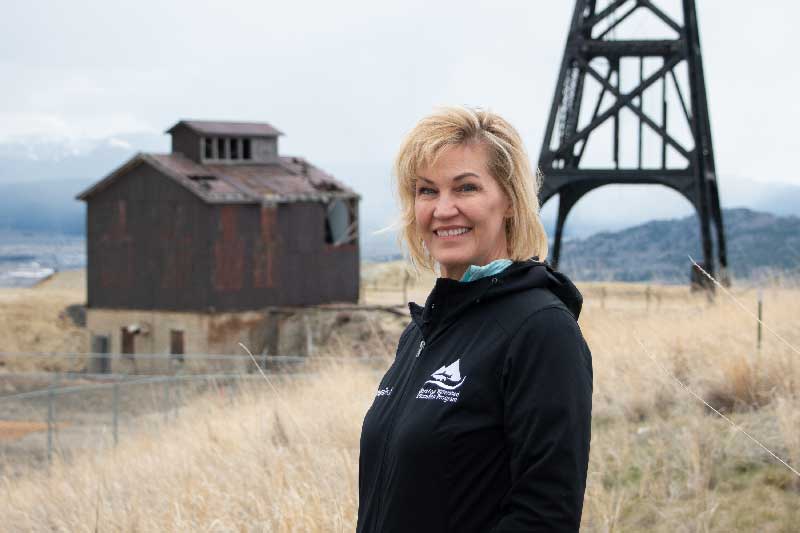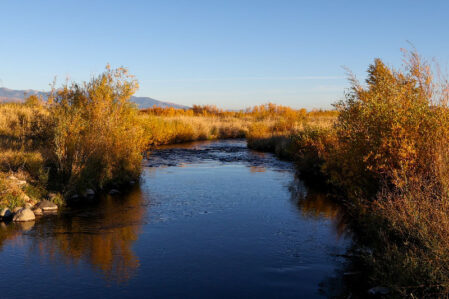
By Rayelynn Brandl
Montana’s iconic landscapes are shaped by the waterways that course through her mountains, valleys, and plains. Water has determined where the people live, the movement of goods and resources, and has provided for all human needs including food, shelter, clothing, and eventually commerce. Beginning with our Native Peoples, waterways were named and honored for the bounty they provided, and often regarded as sacred areas for many tribes. Tribal peoples were bound to the land and its waterways. The intrepid explorers who ventured into these lands made their own mark, often changing the names of long-known landmarks effectively colonizing Montana. Through the work and diligence of many tribal cultural committees, place names and native oral histories have been archived and maintained to preserve and protect these cultures.
The epic story of the Lewis and Clark Expedition is rooted in Montana’s culture and certainly the Missouri River’s course through Montana through to its headwaters at Three Forks, Montana is marked by culture, tradition, and indeed strife. The Missouri would become dotted with forts and trading posts, marking the progress of white explorers seeking to build their wealth and realize the dreams of an expanding nation. In their wake, they left an indomitable spirit of adventure, discovery, and self-reliance that to this day dominates Montana culture.
Following in the footsteps of the fur traders were the homesteaders, whose westward journeys marked the great expansion and white settlement of the United States following the Civil War. Many of these people were immigrants to the still young democracy known as the U.S., seeking the promise of the American Dream. Their resilience and determination saw them through the harshest of Montana winters and driest of Montana summers. These hard-working farmers and ranchers skillfully harnessed the waters of the state for irrigation, changing the courses of rivers and streams to suit their needs for farming. They turned the soils and planted, providing a bounty of harvest to the growing population.
It was within the vast open prairies and wild lands that Cowboy culture was born. Raising cattle and other livestock became the heart of the Montana economy alongside natural resource development and extraction industry. The cowboy embodied freedom, resilience, and a bond with the land—not so unlike their tribal nation predecessors.
Today, the cultures and ways of knowing continue to shape Montana’s soul. The fabric of our identity is tied to our wild lands, our waterways, and our history. The unspoiled mountains with pristine rivers sparkling throughout invite us to recall a time when the human footprint upon our planet was much lighter. Crystal clear lakes call us to reflect upon ourselves, to sit in quiet repose and consider our lives, and to take time to enjoy and embrace the gifts of nature and her bounty. The call of the wild echoes through our forests, beckoning us to tramp along a trail, to cast a line, to sleep under the stars, to love and respect these treasured places. Outdoor recreation and tourism have become an inseparable part of our culture, nurturing our love affair with those things wild and untamed.
This love affair has led to the creation of conservation groups and activists who seek to maintain access to lands and waterways, effectively becoming the guardians of fishing and hunting culture within the state. Montana’s beauty, delicate and yet powerful, has kindled the flame of environmental stewardship that burns within the hearts of many Montanans. Too recent and familiar are the stories of rampant destruction and environmental degradation within our beautiful landscapes. These lessons were hard learned and thankfully, the next generation of stewards will ensure that the legacy of restoration and rebirth is balanced. Our current mining, logging, and extraction practices embody this attitude of stewardship as our industries step up to the challenge of creating a healthy, vibrant economy alongside a healthy, vibrant ecosystem.
In the end, Montana’s culture and heritage have been shaped by the interplay of water and land. As the water shaped the land, the water has shaped all of us too. The sacred connection between our waters, our lands, and our peoples have created the home we call Montana. The story of Montana is a tale of triumph over struggle, untamed spirit, and a relentless pursuit of all things wild and free. Montana, with its beauty and bounty, stands as a testimony to the enduring power of nature and the profound impact it has on the human soul.


